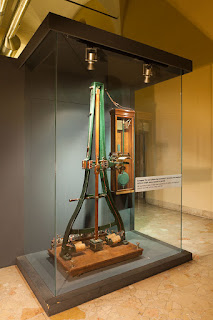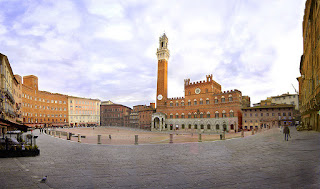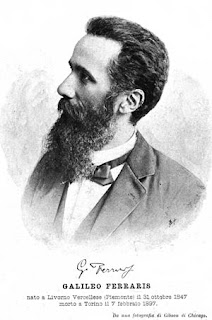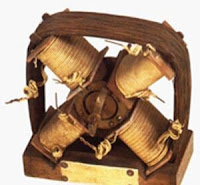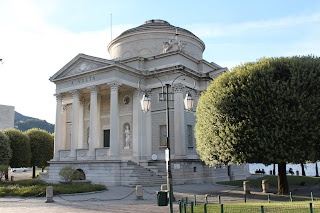Produced light bulb hailed as better than Edison’s
The inventor Alessandro Cruto, whose attempts to create artificial diamonds instead led him to develop a light bulb that outperformed that of his contemporary, Thomas Edison, was born on this day in 1847 in Piossasco, a village near Turin.
Alessandro Cruto was always
fascinated by science
Younger than his American counterpart by just three months, Cruto hit upon his idea after attending a conference held by Galileo Ferraris, the pioneer of alternating current, where Edison’s attempts to find a suitable filament for incandescent light bulbs were discussed.
Cruto eventually opened a factory that eventually made up to 1,000 light bulbs per day but quit the company after seven years to return to his first love, inventing.
The son of a construction foreman, Cruto enrolled at the University of Turin to study architecture but was more interested in attending physics and chemistry lectures, eager to advance his knowledge. It was after attending one of these lectures that he hit upon the idea that he could produce artificial diamonds by crystallising carbon.
In 1872, he opened a small workshop in his home village. In the September of the following year, his experiments resulted in him creating a dense carbon material that was hard enough to scratch glass. But it did not resemble anything that could be recognised as a synthetic diamond.
 |
| An example of the light bulbs created by Cruto |
Cruto's process resulted in the deposition of graphite on thin platinum filaments in the presence of gaseous hydrocarbons. Subjected to high temperatures, this created thin filaments of super-pure graphite.
In 1882, he attended the Electricity Expo at Munich, where his graphite filaments, which produced a strong, white light, outperformed Edison’s carbon-coated bamboo filaments, which gave off a rather less effective yellow light and burnt out more quickly.
The following year, Cruto’s bulbs illuminated the centre of Piossasco, enabling his home village to claim to be the first in Italy to be illuminated by electricity, rather than by the dim gas lamps that until then were the sole source of light in Italy’s towns and cities once the sun had gone down.
After exhibiting again at the Turin Expo in 1884, he generated sufficient interest that he decided to produce bulbs on a commercial scale.
 |
| Cruto established a manufacturing plant in order to make light bulbs on a commercial scale |
With limited financial backing, the odds against his company becoming the dominant player in the light bulb market even in Italy were long. With much more financial muscle, the Italian Edison Company was too big a competitor. Edison installed a thermo-electric power station in Milan and supplied the bulbs for all the properties it served.
Cruto remained at the helm of his business until 1889 and only when its output hit 1,000 light bulbs a day did he take a step back. In 1893, after some major disagreements with managers he had appointed in his place, he resigned in order to return to his workshop to focus on new inventions.
The factory was sold a number of times, went bankrupt and was eventually acquired by Philips in 1927. The Cruto name remained in use for some years after Alessandro had ceased to be involved, with examples in existence that were manufactured as late as 1902.
Cruto spent the rest of his days dividing his time between his family and his workshop. He died in 1908, his important contribution to the development of artificial light largely forgotten.
Travel tip:
The Church of San Vito dominates the parish
of the same name in Piossasco
Piossasco, where Alessandro Cruto was born and opened his first workshop, is a town not far from Turin, halfway between Turin and the beautiful and elegant town of Pinerolo, famous for being the ‘home’ of panettone and other enriched breads. A village when Cruto was growing up, it has expanded into a town of more than 18,000 people. Situated about 20km (12 miles) southwest of the Piedmont capital, Piossasco overlooks the beautiful Parco Naturale del Monte San Giorgio, and has some notable historic buildings such as the Castello Ai Nove Merli di Piossasco, which has medieval origins and occupies a panoramic position commanding sweeping views of the Pinerolese and Valsusa areas. The San Vito parish of Piossasco is notable for the church of the same name, which evolved from a former monastery and was largely built at the end of the 16th century with a Baroque facade added in the 19th century.
Travel tip:
Turin is famous for its Savoy palaces,
including the 16th century Palazzo Reale
The city of Turin, once the capital of Italy and traditionally seat of the Savoy dynasty, is best known for its royal palaces but tends to be overlooked by visitors to Italy, especially new ones, who flock first to Rome, Florence, Venice and Milan. Yet as an elegant, stylish and sophisticated city, Turin has much to commend it, from its many historic cafés to 12 miles of arcaded streets and some of the finest restaurants in Piedmont. To enjoy Turin’s café culture, head for Via Po, Turin’s famous promenade linking Piazza Vittorio Veneto with Piazza Castello, or nearby Piazza San Carlo, one of the city’s main squares. In the 19th century, these cafès were popular with writers, artists, philosophers, musicians and politicians among others, who would meet to discuss the affairs of the day.
Also on this day:
1494: The birth of painter Jacopo Carucci da Pontormo
1671: The birth of Gian Gastone de' Medici, the seventh and last Grand Duke of Tuscany
1796: The birth of Charles Emmanuel IV, King of Sardinia
1949: The birth of film producer and football club owner Aurelio De Laurentiis
1981: The birth of celebrity chef Simone Rugiati

